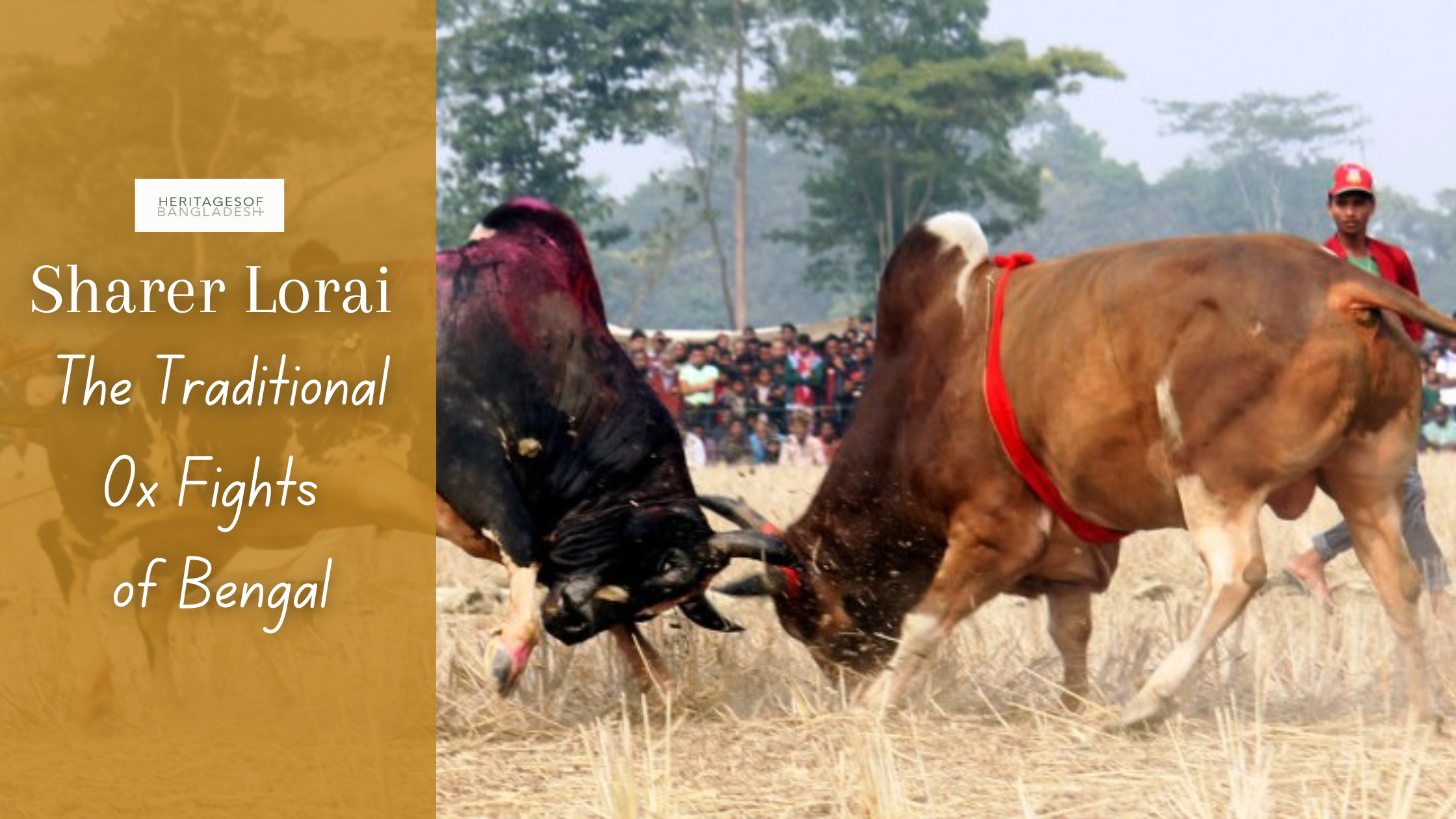Sharer Lorai (ox fighting) is a time-honored tradition in rural Bengal, deeply intertwined with the region’s agrarian lifestyle and cultural festivals. Known for its excitement and spectacle, Sharer Lorai is more than just entertainment—it’s a celebration of the bond between farmers and their oxen, a display of strength, and an expression of pride in rural life. This event, often held during local fairs and harvest festivals, has been a part of Bengal’s cultural fabric for centuries.
Origins and Historical Significance
The roots of Sharer Lorai date back to the days when Bengal’s rural economy was almost entirely dependent on agriculture. Oxen were essential for plowing fields, transporting goods, and performing other labor-intensive tasks. Over time, the strength of an ox became symbolic of a farmer’s success and prosperity. As early as the Mughal period (16th to 18th century), there are references to contests involving oxen, where farmers pitted their animals against each other to showcase their strength and endurance.
One of the earliest documented instances of Sharer Lorai can be traced back to the regions of East Bengal (present-day Bangladesh), particularly in districts like Mymensingh and Jessore, where these contests were associated with local religious festivals and fairs. Similarly, in West Bengal, districts such as Birbhum, Murshidabad, and Nadia became known for hosting these events, especially during the post-harvest celebrations.
Timing and Locations of the Fights
The Sharer Lorai is most commonly associated with the harvest season, particularly during the Poush Sankranti festival in January, when farmers celebrate the end of the agricultural year. After the harvest, when the fields are cleared, the farmers have the time and resources to focus on their oxen, leading to the staging of these competitions.
One of the most famous Sharer Lorai events in West Bengal is held in the Birbhum district during the Poush Mela, a traditional fair celebrating the harvest. Here, the ox fights are the main attraction, drawing large crowds from surrounding villages. Another notable event takes place in Murshidabad, where the Sharer Lorai is a centerpiece of local fairs that coincide with religious observances like Durga Puja and Kali Puja. These fairs often serve as a platform for villagers to showcase their prized oxen and revel in friendly rivalry.
In Bangladesh, districts like Rajshahi, Faridpur, and Mymensingh continue to host similar events during the Nabanna Utsab, a traditional festival celebrating the first rice harvest. The fights usually take place in open fields or arenas where villagers gather in large numbers to witness the contests, which have become a matter of local prestige.
The Event: Preparations and Spectacle
Preparing an ox for Sharer Lorai is no small task. Farmers invest months in training their oxen for these competitions. The animals are given special diets rich in grains and oilseeds to build their strength and stamina. Their daily regimen includes exercises to increase their endurance and agility, often involving pulling heavy loads and participating in mock contests. These animals are highly valued, often seen as the pride of the farmer and the village.
On the day of the event, the air is filled with excitement. Villagers from nearby areas gather to witness the spectacle, with traditional music and drumming heightening the festive atmosphere. The arena, usually a large open field, is encircled by spectators, all eager to see the contest unfold. Two oxen, led by their owners, enter the field and are positioned facing each other. At a signal, the contest begins, and the oxen push and grapple with each other using their heads and horns. The ox that manages to overpower or outlast its opponent is declared the winner.
In many cases, Sharer Lorai is not about causing harm to the animals but rather showcasing their strength and endurance. The contest typically ends when one ox successfully forces the other to submit, often marked by backing away or laying down.
Cultural Importance and Legacy
Sharer Lorai holds deep cultural significance in the rural areas of Bengal. It serves as a reminder of the historical importance of oxen in agricultural life and as a way for farmers to express their pride in their animals. The contests are seen as an exhibition of a farmer’s dedication, hard work, and the close bond shared with their oxen, which are often considered part of the family.
In addition to its agricultural and economic implications, Sharer Lorai also fosters a sense of community. These events bring together villagers, fostering camaraderie and collective pride in rural traditions. The ox fights are a key part of the local fairs and festivals, symbolizing the joy of the harvest and the hope for a prosperous future.
One of the most prestigious Sharer Lorai events occurs in Birbhum during the Poush Mela, which has been held for over 150 years. This particular event is not just a local attraction but has also become a part of the broader cultural identity of the region, attracting visitors from urban areas who seek to experience rural Bengal’s traditional practices. Similarly, the Sharer Lorai held during the Nabanna Utsab in Bangladesh is a long-standing tradition, with roots going back several centuries, and continues to be a major draw for villagers and tourists alike.
Conclusion
Sharer Lorai is a vibrant expression of Bengal’s agricultural heritage, reflecting the strength, resilience, and spirit of rural life. This age-old tradition is more than just a fight between two oxen—it is a symbol of hard work, prosperity, and the enduring connection between humans and animals in agrarian societies. As part of fairs and festivals, Sharer Lorai continues to captivate audiences, serving as a reminder of the cultural pride that remains at the heart of Bengal’s rural communities.

